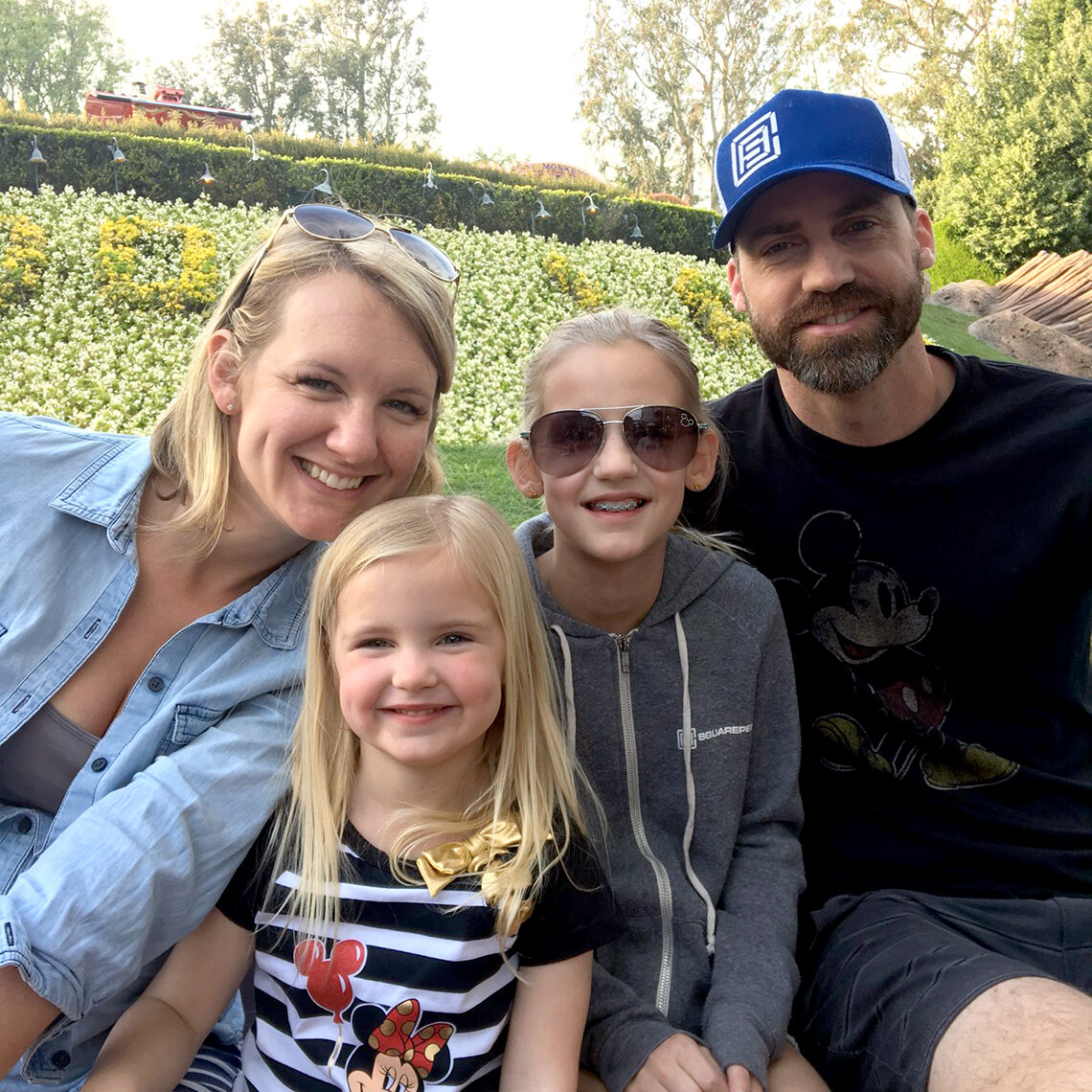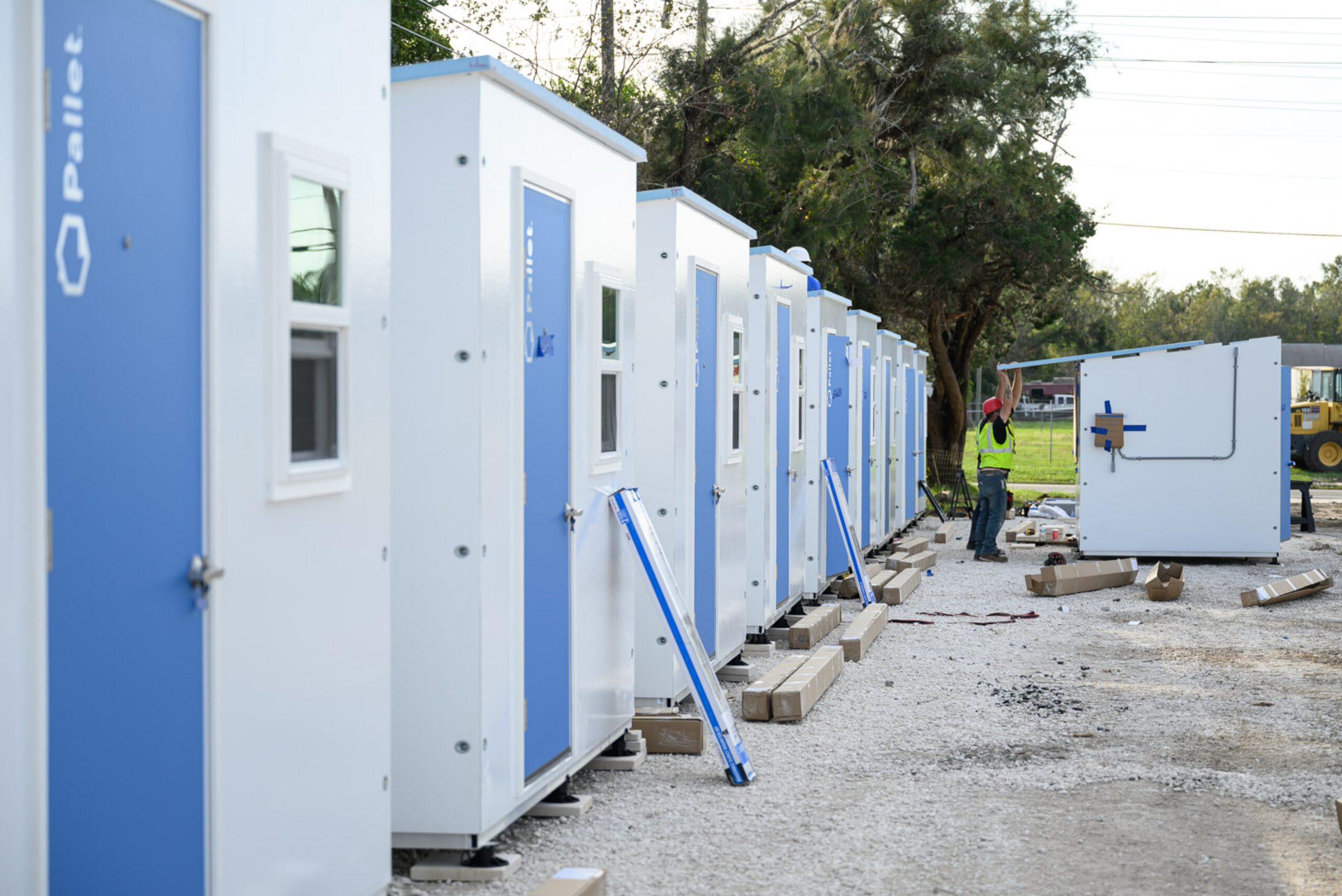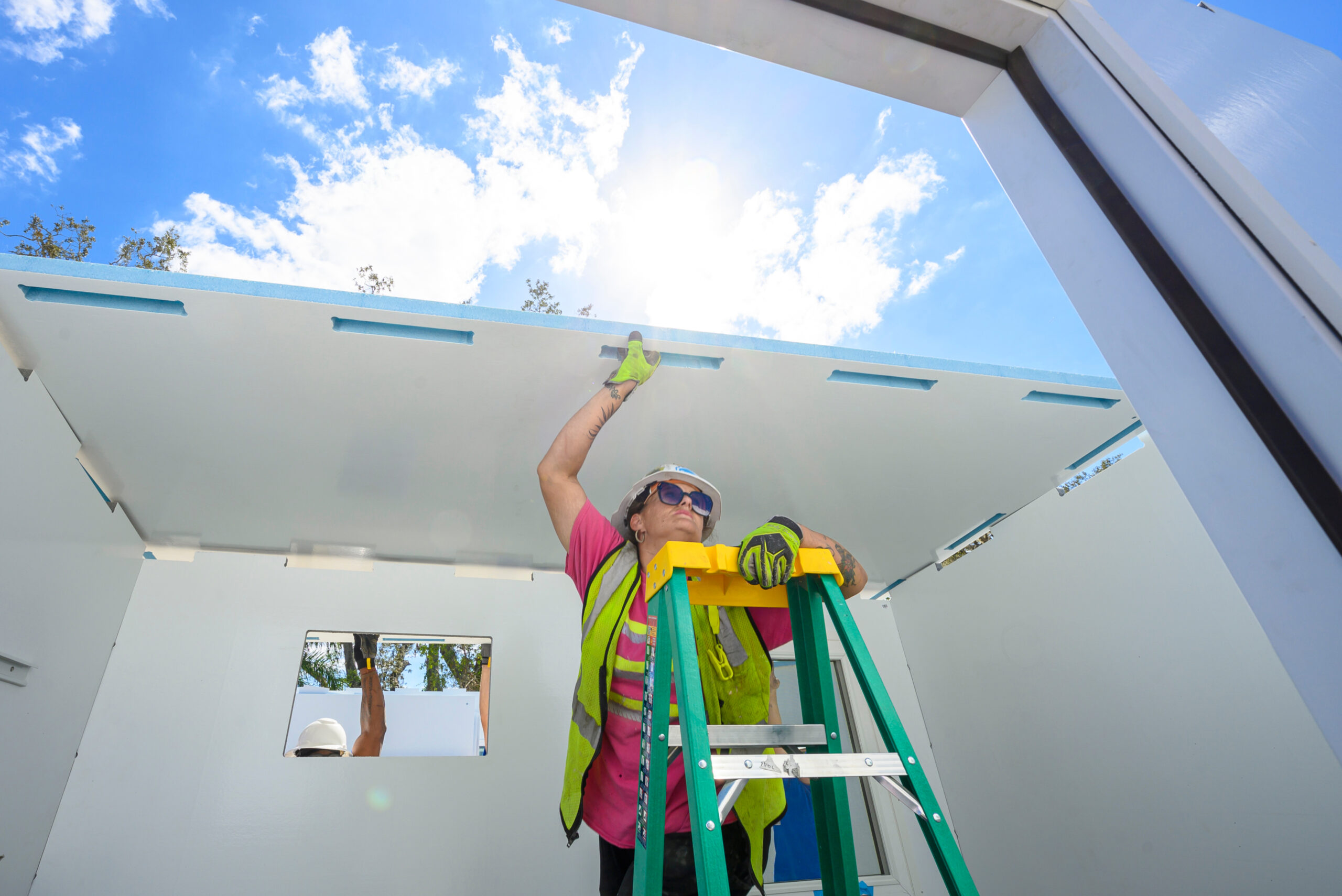Interview with Pallet Founder and CEO, Amy King
November 16, 2020
Pallet began building personal shelters for people experiencing homelessness in 2016 — but the story of the company, its people, and its impact started years before the first shelter was built. In this interview, Amy King (Pallet Founder and CEO) talks with Blake Kohler from Pulse for Good about the origins of the company.
This interview was originally heard on Pulse for Good’s podcast, The Business of Vulnerability. Minor edits have been made in converting this conversation to text (such as the removal of conversational terms, such as “um,” and “so”), however the content of the interview remains the same.
Interview with Amy King:
BLAKE: Amy, can you share what Pallet does and where we may have heard of you from?
AMY: Yeah, so Pallet makes homeless and disaster response shelters. They're panelized for rapid deployment. We have been setting up shelters all across the country. So you might've heard of us in your city setting up a community for people that have experienced homelessness, or you might've heard of us in the news as we've been doing some work in some of the larger high-profile cities, like Los Angeles.
BLAKE: When, when you talk about shelters, what type of shelters are you talking about?
AMY: Our shelters are meant to be temporary. They are a stepping stone for people as they transition out of homelessness and move towards permanent housing. They're not a substitute for permanent housing, but they kind of look like tiny homes. They're made of a non-organic material that is mold, mildew, and rot resistant. They go together in about 20 minutes with no tools required, and they last 10+ years. So they're really meant to be a cost-effective solution for cities and service providers to shelter people quickly and cost-effectively, and they are just a small sleeping cabin, basically a place for someone to stay and keep their things have an opportunity to stabilize as they transition out of homelessness.
BLAKE: Wow. How did you come up with the idea of doing these types of shelters compared to large congregate shelters?
AMY: My husband and I actually own another company called Square Peg Construction, and we build permanent housing. We started that about six years ago now, and that entity, we employ people that are exiting the criminal justice system, addiction, recovery, and homelessness, and our employees were the ones who, as we talked to them and learned more about their stories of homelessness and criminal justice system interaction, we learned a lot about what was missing in society in order to help people successfully reintegrate and exit poverty sustainably.
What we heard over and over again is that what was missing was dignified shelter. Our people told us they often didn't want to go to congregate shelters because it wasn't dignified for them, and that they couldn't take their things. They couldn't stay with their partner. They couldn't take their pet. They were afraid of the other people present there who might steal their things.
So we started problem solving. How can we give that dignity of personal space, but still create an effective solution that allows for service providers to provide the services that are needed?
What we came up with was individual shelter cabins that allow for the personal space, but in a community setting. So you provide the benefits of community, but each person gets the dignity of their own personal space. And it was all created with feedback and input from our employees who had lived experience in homelessness.
BLAKE: Wow. That's that's really, really cool. You mentioned that you set these up in a community setting, how is the setup process of a shelter?
AMY: They really are intended to be set up in a community setting. We don't typically see scattered placements of one shelter here, one shelter there -- that's kind of a “no-no” in terms of municipal requirements and permitting. So we usually work with cities, counties, states, and service providers to identify a piece of land, or they will identify a piece of land that's either unutilized or under-utilized, and then we can set up a community in a matter of days for people to be sheltered. We do put them right next to each other with appropriate spacing, for fire safety and all of that. And they have electricity, heat, air conditioning. People can plug in their cell phones.
Typically there's a congregate bathroom and community space for kitchens and eating, which is by design. We want people to engage in community. We don't want them to isolate in their units.
So we intentionally left the bathroom and kitchen out of our unit so that people had to leave their unit to engage with others and have that interaction. And that’s the idea of it -- somebody is going to come in, use this until they're stable enough to move to some form of permanent housing, and then somebody else is going to use it.
BLAKE: How long do people stay in the shelters? And how do providers triage who should be given these shelters.
AMY: To answer your first question, the intention is that someone would stay in the shelter for a short period of time, maybe a few months, while they're waiting for a space in a permanent housing unit. I think we all know that the end goal is permanent housing. Everybody wants that. So do we. But we know it takes a really long time and it's very expensive to build that housing. And so this is meant to be a stopping place, a stepping stone for people to stabilize.
Most of the residents in our communities stay for three to six months, maybe a little longer, and then they move on to the next thing, which is a more permanent solution. The units are cleanable and sterilizable. So between residents, you can bleach them, you can scrub them down, you can hose them.
So in light of COVID, it's actually a much more effective tool than most of the shelter solutions you see today because you can clean it between uses, you're not transferring the virus if someone has it.
To answer your question about how people are selected for shelter, we don't actually participate in the intake process. Pallet provides the shelter, and the city or service provider does that work based on what the needs are in their own community -- we don't pretend to be experts in that area, when local service providers know their community so much better. Within each city or county, there are usually really amazing service providers doing this work and they know the community, and they know who needs help the most. So we let them do what they're good at, and we provide the shelter solution for them to do it in.
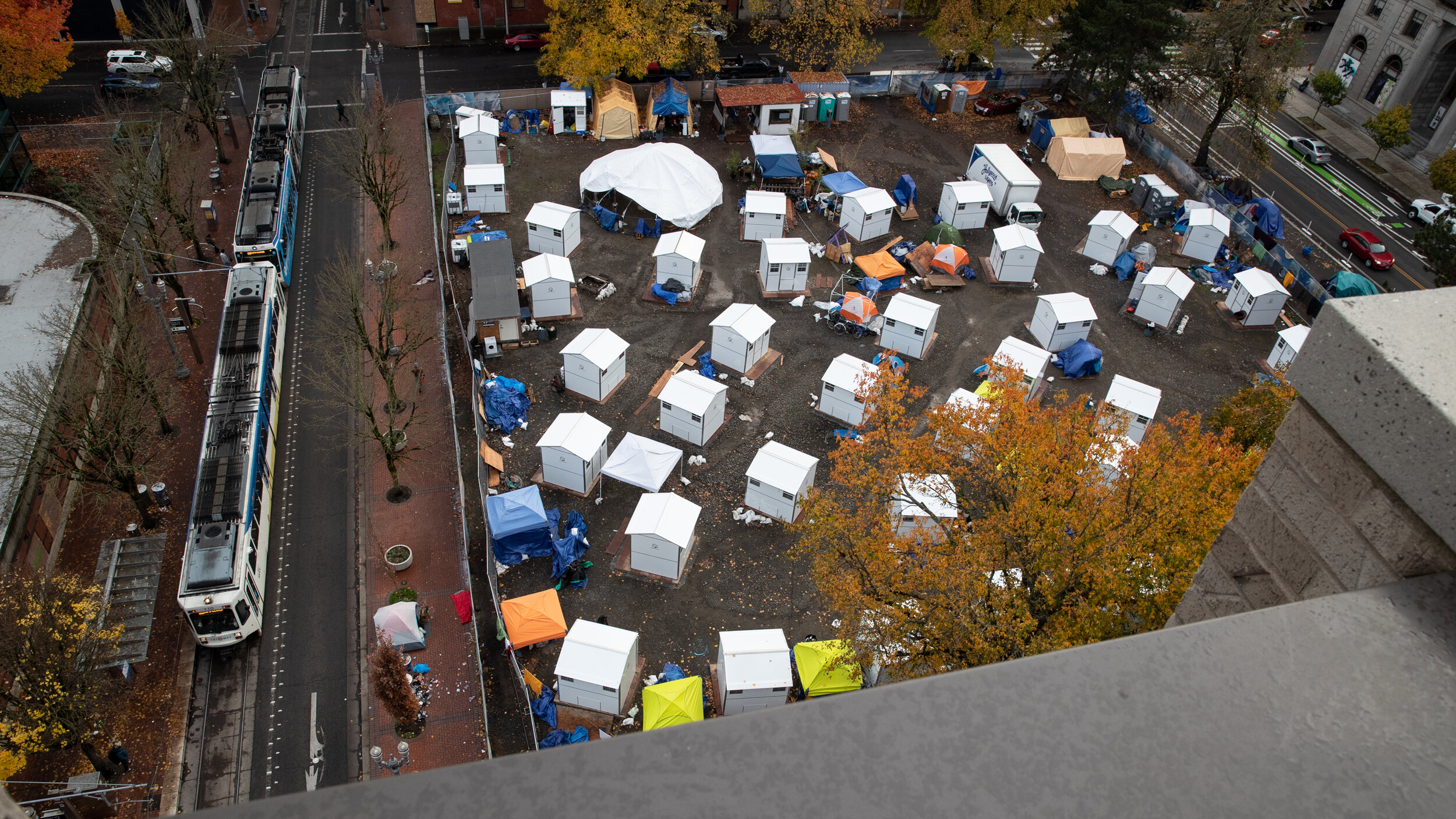
Photo Courtesy of Multnomah County
BLAKE: Wow, very cool. Do you guys normally contract with individual service providers, or is it the city or the county? What's the traditional process of getting this started inside of a community?
AMY: It varies, most of our customers are cities, counties, and states, and then they will contract with a service provider to manage the site. In some cases, though, we will work directly with a service provider who has a piece of land or access to land. So it kind of varies, we can do both. We also are exploring some really exciting opportunities to work with the corporate community, to leverage corporate land and be able to put up communities on private land.
BLAKE: That'd be very interesting. When you assemble these and build them, how long does it take? How long are they meant to last? Are they hard to move? Can you answer some of those types of questions?
AMY: Yeah, they go together in about 30 minutes with little to no tools required. In Maui, for example, we trained their firefighter and national guard teams to set up 28 shelters in four hours. And that same day, 28 people's people moved off the streets.
That's probably the fastest one we've ever done. We've done 60-unit sites in 10 days. We've done 50-unit sites in a few days, it kind of just depends, and we can send a team to match whatever the city's setup needs are (we can send a really large deployment team or a smaller one). But they go up really, really, really fast. And when you're done with them, or if you want to move them to a different site, you can disassemble them and then reassemble at the new location, and again, it would just take about 30 minutes.
They last up to 10 years and we have units that have been put together and taken apart hundreds of times for demos and shows and different things like that -- and they still are just as durable and robust as they were when we first put them together. So this material that they’re made of is really, really durable, and it lasts a long time.
BLAKE: I’m sure you’ve had some conversations with individuals who are using them, what are their responses to using the Pallet shelters?
AMY: The residents that use our shelters often will say that they love them because they have their own space, and they also love that they have a locking door. They have safety and security when sleeping at night. If you live in a tent, an intruder can easily cut that tent with a knife -- but in our shelters, there’s no risk of someone barging in on you.
And during the day, people can leave their belongings safely secured in the shelter while they engage with services or go to work.
In addition to that, a lot of them love that they can decorate their own space. We see that a lot, with shelters that are really nicely decorated and well cared for. I think they like that they have their own little home. They have their own little space that's theirs. They're living a normal life, and that's that stability that we want to provide, that opportunity for them to have a different experience that then moves them towards that permanent housing solution.
BLAKE: That's interesting. In my day job, when I'm not doing the podcast, our work is to try and help individuals who are homeless have more of a voice and share some of the things they wish they could have. And often one of those things is the ability to store things, places where their stuff is not going to get stolen, somewhere to sleep at night. It's interesting how many of those things are met just by these simple shelters, right?
Not to mention human dignity, that that really matters. It's a tremendous thing that you guys are doing.
AMY: Thank you. I believe the reason that our shelter meets all those needs is because it was designed by people who have experienced homelessness. They told us, “I wished that I had a place to store my things. I wish that I could have known that every night I was going back to the same place, rather than moving from shelter to shelter and not knowing where I’d sleep that night.
Without a stable place to sleep at night, there’s perpetuation of the cycle of trauma for someone, when they have that instability and uncertainty of what's coming next. In developing these shelters, the goal was “how do we create something that gives that sense of stability and security so that people don't have to worry about where they’ll sleep, they can worry about things like, ‘how do I engage with services?’ or ‘how do I get a job?’ or do the thing that I need to do that takes me out of homelessness?”
Because once you get into homelessness, you can get stuck in that cycle. And one of the reasons that these shelters are so great is because we have so many people on our team that have walked that journey that have said “you should design the shelters with this feature, or that feature” based on their lived experience in homelessness.
BLAKE: That’s something you mentioned before we started recording, that Pallet is a unique company because of the people that you employ. Can you share a little more about that?
AMY: So, the majority of our employees that help to build our shelters are individuals with lived experience in homelessness, addiction, and/or the criminal justice system. They come to us through a variety of methods, often word of mouth. A lot of them hear about us from people that they were on the streets with, or that they were incarcerated with. But we also have really strong relationships with shelter communities here, recovery programs, and the department of corrections.
We get direct referrals for people who have nowhere to go when they are released from prison or have nowhere to connect as they exit homelessness. And we're big believers in radical hospitality and accepting people. People need a place to belong, a purpose, and meaning in their life to succeed.
We help with that through the offering of employment. We also offer resources and connections to housing and wraparound services so that people can be successful, and we try to create a culture within the company that is like a family, where everybody has a place to belong.
That's a key piece of homelessness: it is a radical loss of relationship, at the day. And so we're trying to recreate that opportunity for people here.
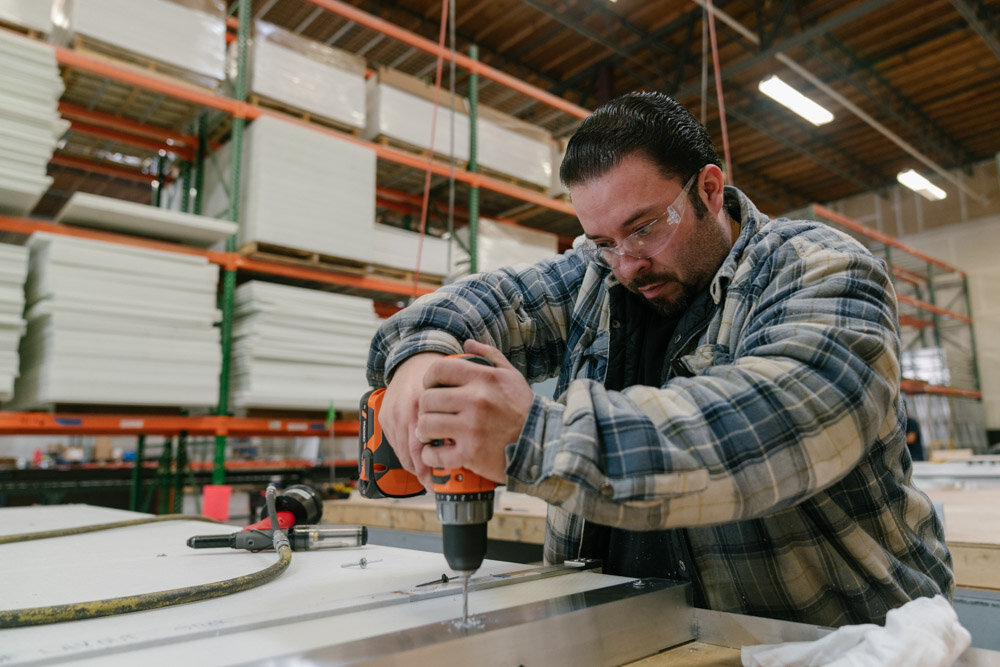
BLAKE: You mentioned that you and your husband run another company as well. And I'm curious, why this? You could do so many other things. I mean, you could even run a nonprofit directly, so why a social purpose company, and why Pallet?
AMY: Funny you should mention that, we actually do also run a nonprofit. We have a nonprofit here that houses people across Seattle in vacant developer properties, and provides those wraparound resources that I was talking about.
My husband and I are really passionate about housing in general. He is a general contractor, and has been for almost 20 years now. We're passionate about housing and the gaps that we see in the housing market. But we actually started doing this work of employing people out of necessity. It was not intentional.
When we started our construction company, we put out a job posting for laborers and general craftsmen to join our company, and nobody applied because there was this massive labor shortage in the construction industry. And long story short, we got connected with a group of gentlemen who had been incarcerated. No one would hire them. We ended up taking them on the team. And that's when we started to learn from them and really start to understand the barriers and issues surrounding re-entry, homelessness, and addiction. My husband and I had no experience with this -- we both grew up very privileged with little exposure to this community, totally naive and ignorant. But as we started listening to our employees, we really learned a lot. And we were able to really garner a lot of wisdom from them.
And the more we learned, the more we felt like we can't just pretend this doesn't exist. We couldn’t go back to our life before where, you know, we could ignore the problem on our streets and just walk past it. We couldn't do that.
So what started as five or six men working for us because they had nowhere else to work, has now become hundreds of people working in our construction company and at Pallet over time. And it's been a total joy and blessing to walk alongside them, and have them in our lives.
At Pallet, our goal is to eradicate homelessness. That's a massive goal, and I don't know if we'll see it achieved in our lifetime, but I don't think it's unreasonable to want that to happen.
BLAKE: So how many communities have you built so far?
AMY: Gosh, about 24, 25, somewhere around that total. Over the course of the next two months though, as we enter the end of the year, we've got a deployment happening in a different city pretty much every week. So it's really growing, it's ramping up, which is exciting.
We're really excited to see cities and service providers stepping up and embracing innovation, and thinking about new ways to get people successfully housed.
BLAKE: If there's somebody listening to this podcast that is thinking “we could use this in our own community,” what's the best way for them to reach out to you to have conversations about how they could use Pallet?
AMY: The best way for people to find out more about Pallet is through our website, which is www.palletshelter.com. They can also download case studies to see how other cities have done this, which I think is really helpful. A lot of our cities and municipal customers in particular have a hard time initially thinking through how to put all the pieces together and the utilization, which I understand, because this is a brand new concept.
So we want to be helpful with that. We have teams that can help them with identifying land, working through land use issues, dealing with political stuff around emergency declarations and ordinances. We can help identify partners in the community, all that stuff. So we're here to help. We want to see people do this successfully and for it to be fast, cost effective, and easy for them.
BLAKE: One kind of “last train of thought” that I have running here is that I'm curious how COVID has affected all of these things. It feels like there's going to be a broad shift away from congregate shelters, and it feels like the services you guys are offering would fit perfectly with the current needs. How has it affected what you're offering and the demand for it?
AMY: That's a great question, and it has kind of a complicated answer. When COVID first happened, we became sort of immediately relevant and necessary for a lot of people. We were thrilled about that, and we want to see cities move away from congregate sheltering -- but we're of course not excited about COVID. But we were grateful for that catalyst of pushing people to think about sheltering differently.
So we had a lot of interest when COVID first happened, and since then, things have calmed or shifted a little bit. There's been some issues for cities with funding -- as I'm sure you're aware, a lot of cities and counties get their revenue from businesses, which are now shut down.
What we have found, though, is that there's a lot of really great federal funding mechanisms that support non-congregate shelters, and we can help our customers access those funds. So that has been our latest challenge: navigating the economic downturn, funding challenges, and things like that.
I think that as the next wave of COVID is already upon us, we're going to see a further need to thin out populations to address exposure, and we feel like we're a great fit for that.
A lot of cities are using hotels, which is another great model that we support. Of course we don't think Pallet is going to be the single solution for homelessness -- it has to be a combination of a lot of things. But those hotels aren't offered long-term, right? And so that's where we can step in and say, “if you need to move people out of hotels, you can set up a shelter community near by and move everybody out of the hotels and into Pallet shelters.”
Ultimately, we want to help cities think creatively about how to address their homelessness crisis.
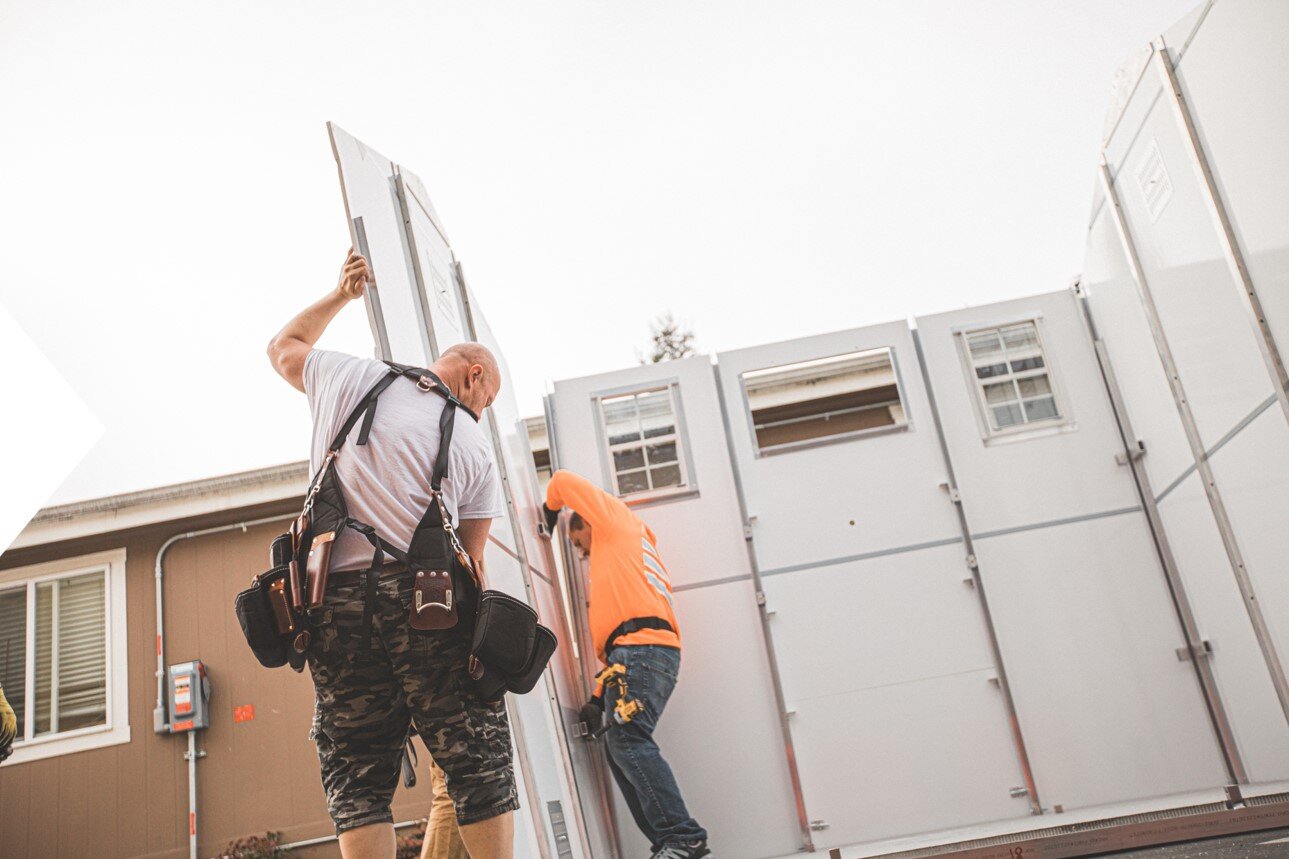
BLAKE: Awesome. Well Amy, I'm kind of out of questions here. I'm really impressed with what you guys are doing. I know you said the shelters can be put up really quickly, but how fast could you realistically implement this? If a large city said, “we need something tomorrow,” how quickly could they get some shelters set up?
AMY: There are a number of factors that play into the answer, and one is what we have available. But typically we have a stock of shelters on hand, and we can respond the next day if that's what a city wants.
If we don't have stock on hand, it's usually about a four-week lead time for us to produce what is needed. Sometimes it's less, sometimes it's more, depending on what we have here. And we're open to considering opening other production factories where other cities can enjoy social benefit jobs as well.
BLAKE: Is there a recommended size for how big of communities that you'd be looking to build?
AMY: That's a great question. We have communities that are really large, and some that are smaller. We recommend that they not be larger than about 30 to 40 units. That's kind of a nice, intimate community size.
That being said, we've seen some cities with a larger piece of land build 120 or 200 units on there. But even then, we recommend that they put them into targeted pods for service reasons. Ultimately that's up to the service provider, how they want to manage that, of course, but we strongly recommend that they create sort of intimate groupings and that they shelter people by needs. So for example, a pod that's for people who are in recovery, and a pod for people who are domestic violence survivors, and then residents have shared experience and they can create a treatment cohort that they're working together. We have found that model to be very successful in the nonprofit that we run. We strongly encourage that within each community.
BLAKE: Awesome. Well, Amy, we are incredibly impressed with the work that you're doing and with everybody at Pallet, and thanks so much for coming on and sharing more.
